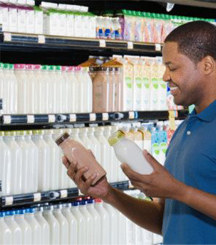Initiatives such as 6-Sigma and TPM have helped producers towards optimised output from their manufacturing networks. Line changeovers are carried out with Grand Prix slickness. Packaging components have been harmonised and rationalised. Output reliability and product quality have never been better. But how much of that output actually ends up in retailer warehouses in exactly the same condition?
Potentially, very little! The product leaving the factory is frequently changed in some way before a consumer picks it off the shelf. The power of retailers means one will want a 6-pack while others opt for 4-packs. Promotional assembly requires the pristine external packaging to be removed (and discarded?) while skus are bundled together or stickered with “special price” labels. All of this requires time and considerable cost. So where should the complexity sit; factory or in the local operating company warehouse?
FMCG producers in particular have slowly but surely reduced the number of under utilised factories in order to make assets sweat in large, regional facilities. Adding a discrete language label for a low volume product destined for a small developing market would upset the KPI chart so it does not happen, perhaps rightly. However this then puts the burden of market development on fledging operating companies. If the product is made by a 3rd party then perhaps this is the correct approach but usually the factory and operating company are part of the same multi-national. Yes, the two entities may well have separate legal and tax set-ups but at the end of the day all the profit (or loss) goes into one pot.
 Blue-chip companies and their shareholders increasingly rely on developing and emerging (D&E) markets for growth as mature markets struggle along with low single digit or negative growth. The common rejection of a request for product X for small country Y is that the volume is not high enough to warrant a dedicated sku or even a place on the back label language cluster. If you place the re-pack/co-pack financial and slow-to-react burden on their shoulders then the likelihood is that their volumes will always be small as they fail to gain manufacturing efficiency benefits.
Blue-chip companies and their shareholders increasingly rely on developing and emerging (D&E) markets for growth as mature markets struggle along with low single digit or negative growth. The common rejection of a request for product X for small country Y is that the volume is not high enough to warrant a dedicated sku or even a place on the back label language cluster. If you place the re-pack/co-pack financial and slow-to-react burden on their shoulders then the likelihood is that their volumes will always be small as they fail to gain manufacturing efficiency benefits.
I do not suggest for example that companies should produce a special pack for a place such as the Isle of Man but there is the dilemma. Do you back slick factories and let the operating companies deal with complexity or vice versa?







